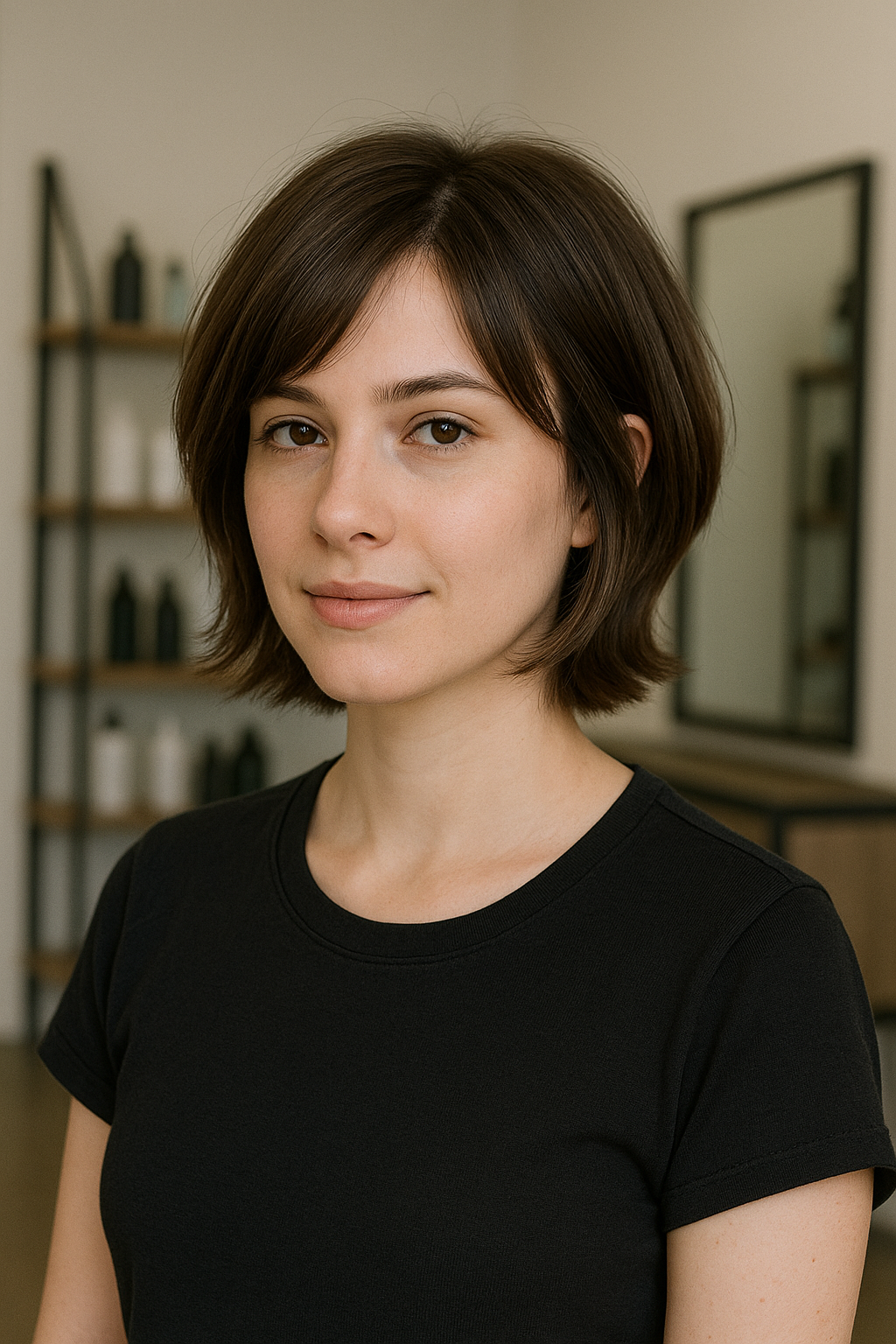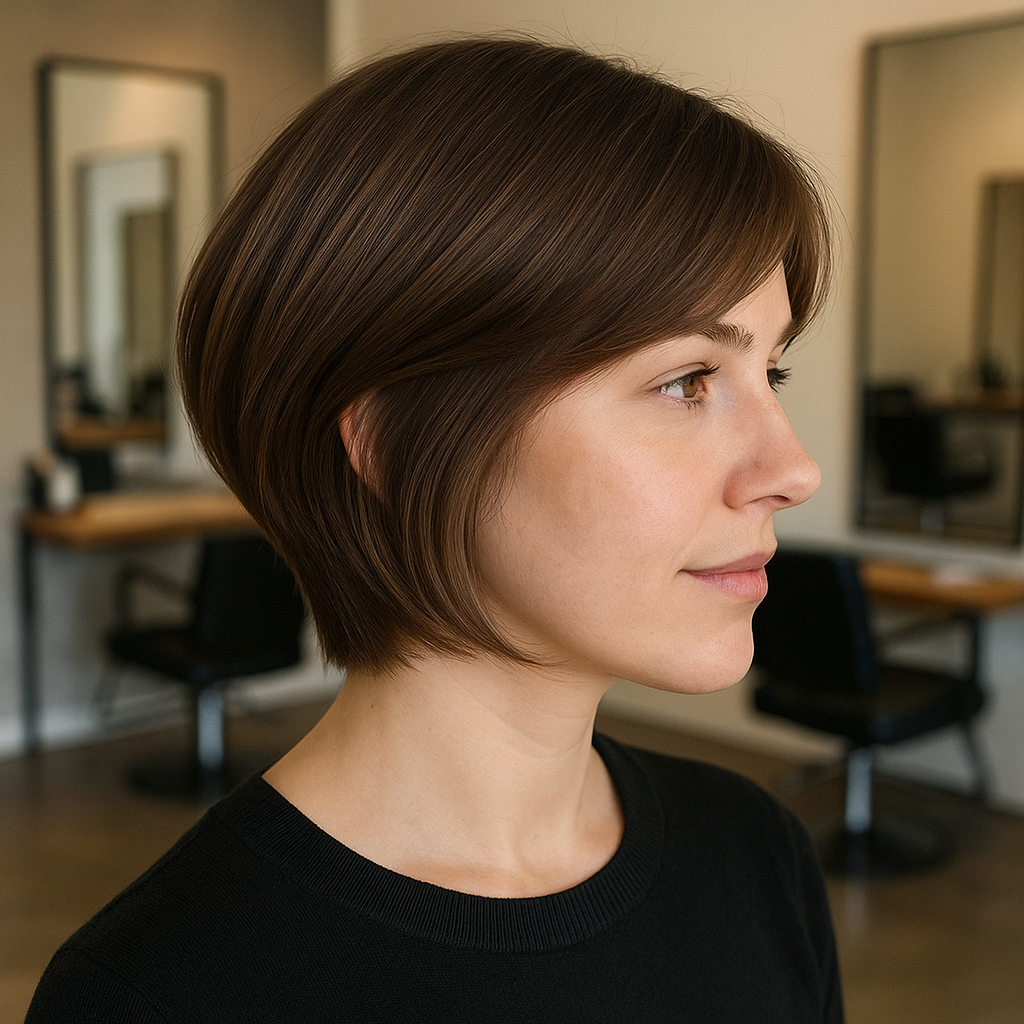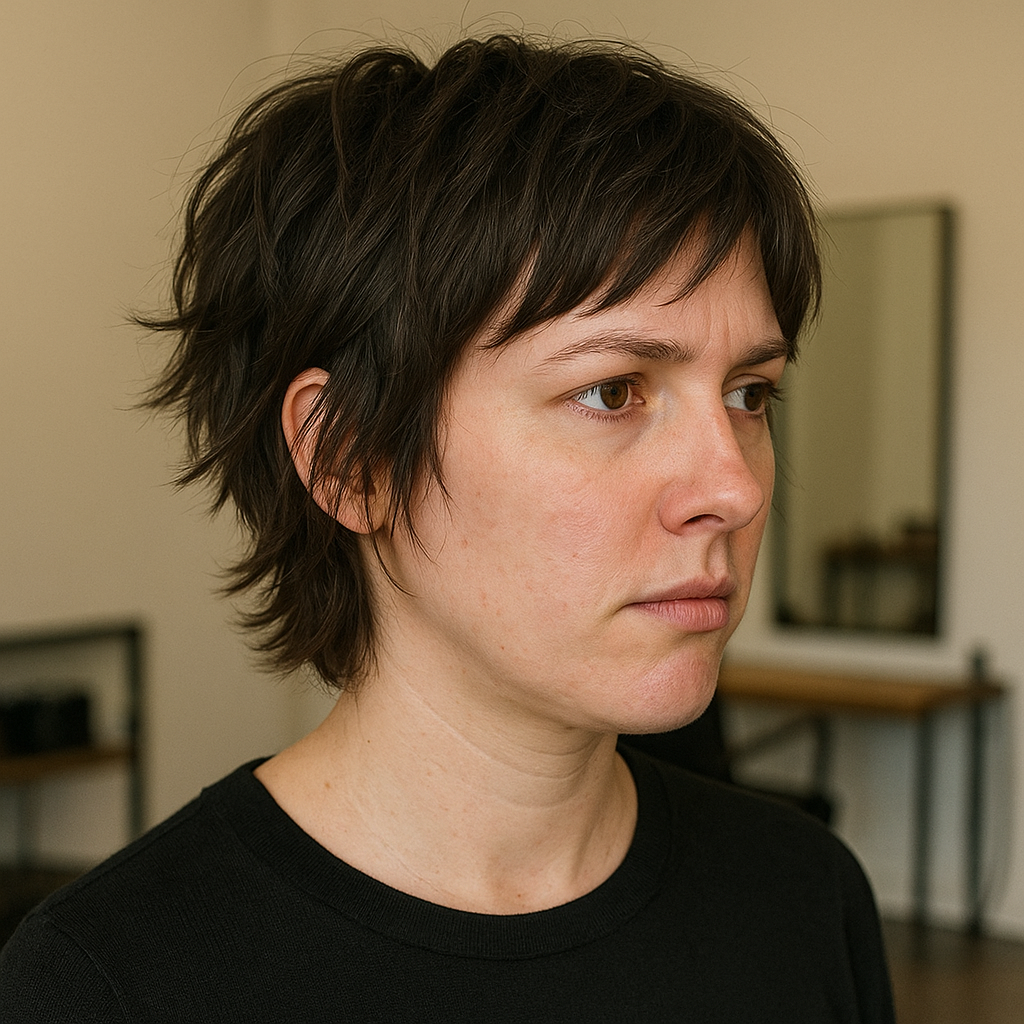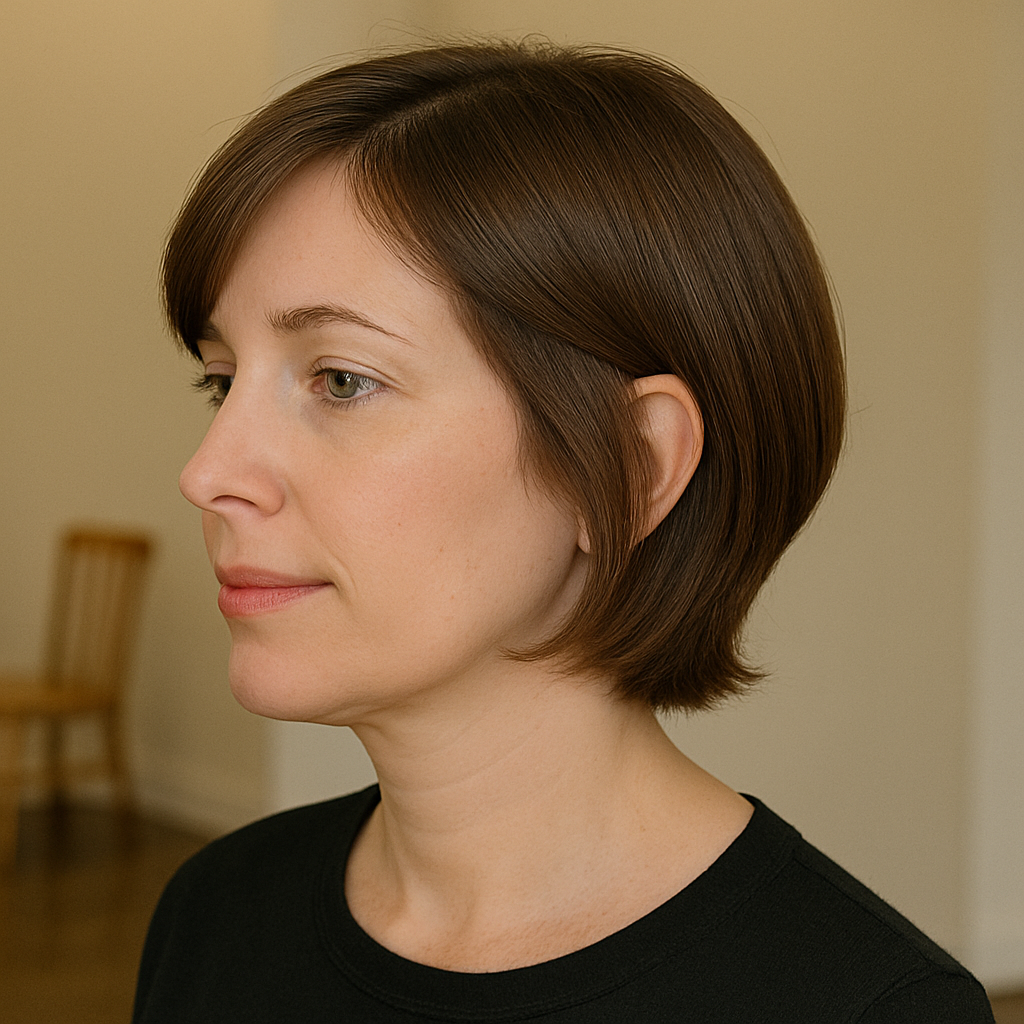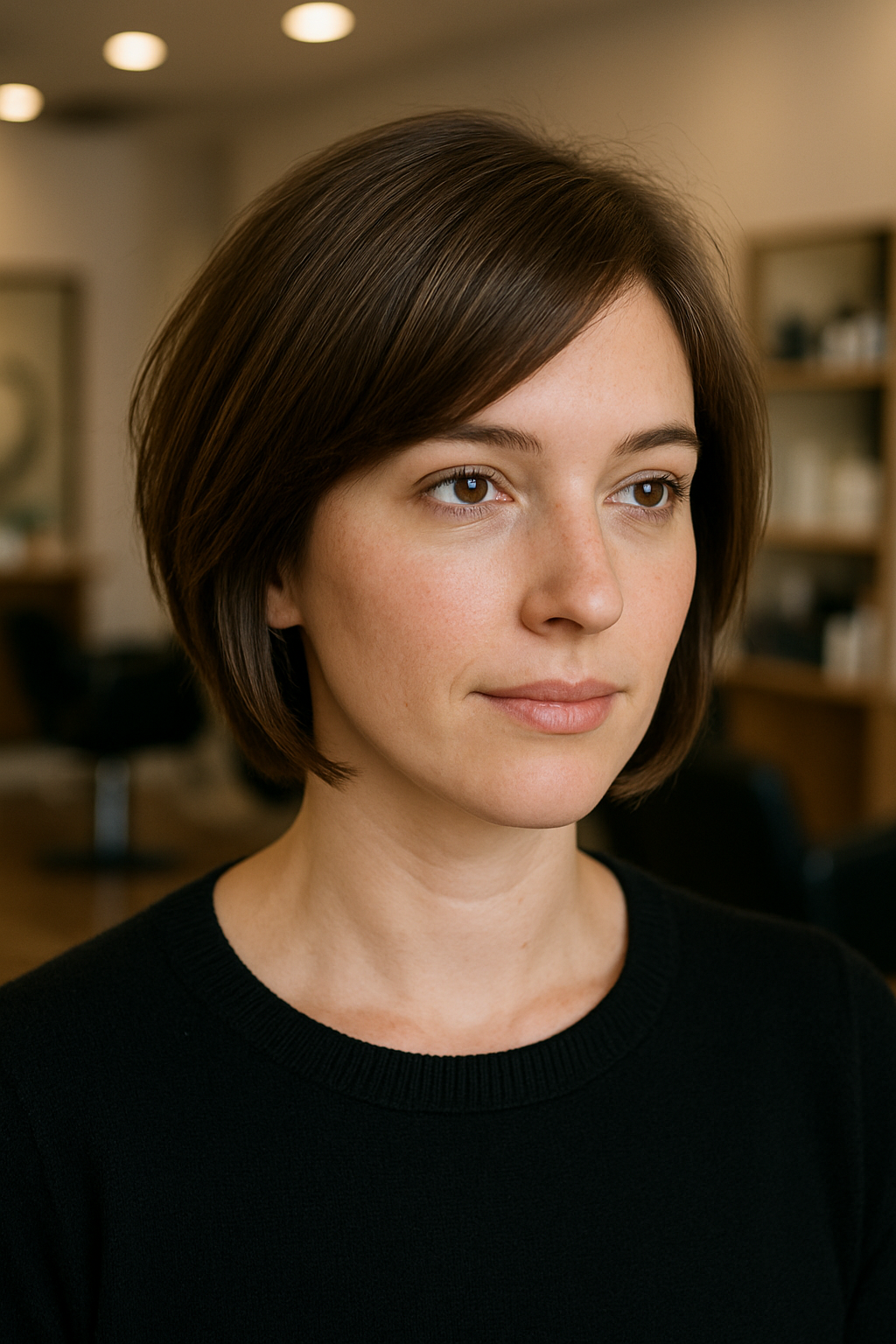Short hair can look amazing when styled right, but without the right layering techniques, it can quickly turn into a boxy, helmet-like shape that lacks movement and softness.
The key to keeping short cuts fresh and flattering lies in how your stylist adds layers and texture throughout your hair.
Whether you have fine strands or thick locks, these layering secrets will help you achieve that effortlessly soft, flowing look you’ve been dreaming of.
1. Face-Framing Layers for Natural Softness
Face-framing layers work like magic to soften your entire look. Instead of cutting all your hair to one uniform length, your stylist adds gentle layers around your face that create movement and dimension.
These strategic cuts draw attention to your best features while preventing that dreaded blunt, boxy appearance. The layers should start around your cheekbones or jawline and blend seamlessly into the rest of your cut.
When done correctly, they add a feminine touch that makes your short hair feel light and airy. Ask your stylist to customize the placement based on your face shape for the most flattering results.
2. Interior Hidden Layers Create Movement
Hidden layers are your secret weapon against helmet hair. These interior cuts sit beneath the surface of your hair, creating movement without sacrificing the overall shape or fullness at the ends.
Your stylist removes weight from inside your hair rather than just chopping at the perimeter. This technique allows your hair to move freely and naturally, bouncing with every step you take.
The beauty of hidden layers is that they work invisibly, giving you texture and flow without looking obviously layered. Perfect for anyone who wants softness but still needs some weight and structure to their short cut.
3. Graduated Blending Prevents Harsh Lines
Graduated layers mean your hair gradually gets shorter as it moves from front to back or from bottom to top. This creates a smooth, seamless transition that eliminates harsh, blocky lines.
Think of it like a gentle slope rather than a cliff—everything flows together beautifully. The blending technique ensures no single section stands out awkwardly or creates unwanted angles around your head.
Stylists achieve this by carefully adjusting their cutting angle and taking thin sections at a time. The result is a polished, professional look that appears effortlessly chic and never stiff or geometric.
4. Avoid Over-Thinning and Choppy Cuts
Too much of a good thing can backfire when it comes to layers. Over-thinning your hair with excessive choppy layers creates disconnected sections that look messy and boxy rather than soft and flowing.
When your stylist removes too much weight in random spots, your hair loses its natural cohesion. The pieces don’t work together anymore, leaving you with an unbalanced, unflattering shape.
A skilled stylist knows exactly how much texture to add without going overboard. Communicate clearly that you want softness and movement, not extreme edginess, so they can adjust their technique accordingly for a polished finish.
5. Match Layers to Your Hair Texture
Your hair texture plays a huge role in how layers should be cut. Fine hair needs fewer, more strategic layers to avoid looking wispy or flat, while thick hair can handle more aggressive layering to remove bulk.
Straight hair shows every cut line clearly, so precision and blending matter even more. Wavy hair naturally creates movement, meaning layers can enhance those curves without being too dramatic.
A one-size-fits-all approach never works with short hair. Talk to your stylist about your specific texture so they can customize the layer placement and depth to complement how your hair naturally behaves.
6. Keep Perimeter Length Slightly Longer
The perimeter is the outer edge of your haircut—the part everyone sees first. Keeping this section slightly longer or softly tapered prevents your cut from looking too blunt or heavy at the bottom.
When the perimeter has some length variation, it creates a softer, more natural finish. Your hair appears to gently taper off rather than ending in a harsh, straight line across your neck or around your ears.
This subtle detail makes a massive difference in the overall vibe of your cut. It maintains shape and structure while ensuring your short hair looks touchable and effortlessly feminine instead of rigid.
7. Style With Texturizing Products and Techniques
Even the best haircut needs proper styling to truly shine. Lightweight texturizing sprays add grip and separation without weighing your hair down or making it feel crunchy and stiff.
Finger-drying your hair creates natural, effortless movement that looks lived-in and soft. If you prefer using a blow-dryer, focus on lifting the roots for volume while directing airflow down the hair shaft to smooth the cuticle.
Avoid heavy creams or oils that can make short hair look flat and greasy. The right products enhance your layers and keep everything bouncy, touchable, and full of life throughout the day.
8. Point-Cutting for Softer Layer Ends
Point-cutting is a specialized technique where your stylist holds the scissors vertically and cuts into the hair at an angle rather than straight across. This creates soft, feathery ends instead of blunt, harsh lines.
Slide-cutting works similarly, with the stylist gliding the scissors along the hair shaft to gently remove length and weight. Both methods produce a textured, natural finish that moves beautifully and never looks severe.
These techniques are especially important for short hair because every cut shows so clearly. Ask your stylist to use point-cutting or slide-cutting on your layers for that perfectly soft, effortless result you’re after.
9. Schedule Regular Trims for Layer Maintenance
Booking yourself in for haircuts every four to six weeks might sound like a lot, but it’s the secret weapon against boxy buildup. When layers grow out unevenly, they start stacking on top of each other like shelves, creating that dreaded blocky effect nobody wants.
Your stylist can refresh the graduation and remove any weight that’s accumulated at the bottom. This keeps the shape flowing smoothly from top to bottom instead of creating harsh horizontal lines.
Think of it like watering a plant regularly—consistent maintenance keeps everything healthy and beautiful. Waiting too long between appointments means your layers lose their intentional shape and start working against you. Frequent trims preserve that airy, dimensional quality that makes short hair so flattering and fun to style every morning.


